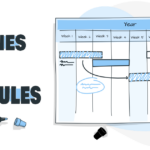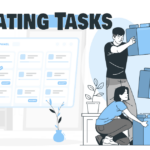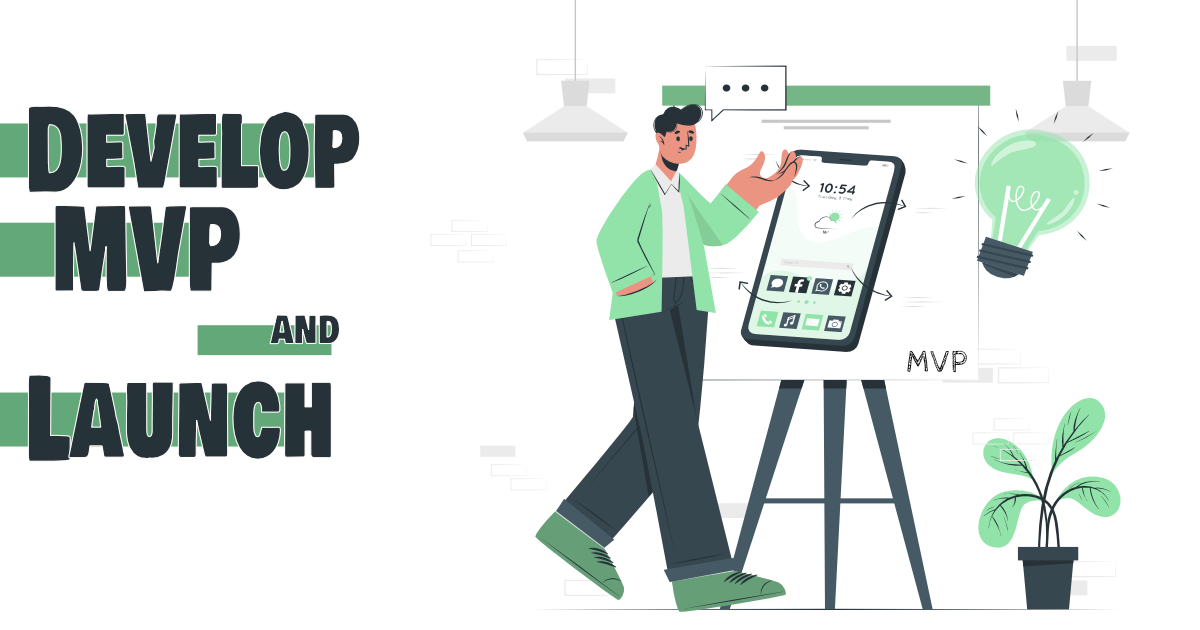Starting a new business is an exciting and challenging endeavor, but it can also be risky. One of the biggest risks is investing time and resources into a business idea that may not be viable. That’s why it’s important to validate your business idea and test the market before launching a new business. In this article, we will explore some strategies for validating your business idea and testing the market to minimize risk and increase the chances of success. By understanding your target market, conducting market research and gathering feedback, you can validate your business idea and identify potential opportunities and challenges. By testing your product or service with a small group of customers, you can gather valuable feedback and make necessary adjustments to your business plan. These are some of the key strategies that can help to validate your business idea and test the market before launching a new business.
Understanding the importance of validating a business idea before committing resources
Validating a business idea before committing significant resources is an essential step in the process of starting a new business. It helps entrepreneurs to minimize risk by identifying potential opportunities and challenges before investing time and money into a business that may not be viable. In this article, we will explore the importance of validating a business idea and some strategies for doing so.
The first step in validating a business idea is to understand your target market. This includes identifying the specific group of customers that your business will serve and understanding their needs, pain points, and behavior. This information will be used to create a targeted and effective marketing strategy.
Once the target market has been defined, it’s important to conduct market research and competitor analysis to understand the market, identify opportunities, and gather insights about the competition. This information should be included in the business plan to demonstrate a thorough understanding of the market and the opportunity.
The next step is to gather feedback from potential customers on the business idea. This can be done through surveys, focus groups, or interviews. Feedback from potential customers will provide valuable insights into the feasibility of the business idea, and if necessary, it will help to make adjustments to the business plan.
It’s important to note that validating a business idea is an ongoing process. As the market and customer needs evolve, it’s essential to continually review and update the business plan to ensure that it remains relevant and aligned with the current market conditions.
In conclusion, validating a business idea before committing significant resources is an essential step in the process of starting a new business. It helps entrepreneurs to minimize risk by identifying potential opportunities and challenges before investing time and money into a business that may not be viable. By understanding your target market, conducting market research, gathering feedback, and continually updating the business plan, entrepreneurs can increase the chances of success when launching a new business.
Techniques for conducting market research and gathering customer feedback
Conducting market research and gathering customer feedback are essential steps in validating a business idea and testing the market before committing significant resources. Market research helps entrepreneurs to understand the target market, identify opportunities, and gather insights about the competition. Customer feedback provides valuable insights into the feasibility of the business idea and helps to identify any issues that need to be addressed. In this article, we will explore some techniques for conducting market research and gathering customer feedback.
One technique for conducting market research is primary research. This includes conducting surveys, focus groups, and interviews with potential customers. Primary research allows entrepreneurs to gather firsthand information about the target market, including their needs, pain points, and behavior. It also provides insights into the feasibility of the business idea and helps to identify any issues that need to be addressed.
Another technique for conducting market research is secondary research. This includes collecting data from existing sources such as industry reports, government statistics, and online resources. Secondary research provides a broad understanding of the market, the industry trends and can also be used to understand the competitors and the market size.
Gathering customer feedback can be done through various methods such as surveys, beta testing, or user testing. Surveys can be conducted online or in person to gather feedback on the business idea, product or service. Beta testing and user testing involve providing a small group of customers with a prototype or minimal version of the product or service and gathering feedback on its usability and effectiveness.
It’s important to note that conducting market research and gathering customer feedback is an ongoing process. As the market and customer needs evolve, it’s essential to continually gather feedback and update the business plan to ensure that it remains relevant and aligned with the current market conditions.
In conclusion, conducting market research and gathering customer feedback are essential steps in validating a business idea and testing the market before committing significant resources. Entrepreneurs can use techniques such as primary research, secondary research, surveys, beta testing, and user testing to gather valuable information about the target market and the feasibility of the business idea. This will help to identify any issues that need to be addressed, and increase the chances of success when launching a new business.
How to create a minimum viable product (MVP) and test it with customers
Creating a minimum viable product (MVP) and testing it with customers is an important step in the process of starting a new business. It allows entrepreneurs to validate their business idea and gather feedback from potential customers before committing significant resources to the project. In this article, we will continue to explore the process of creating a MVP and testing it with customers, with a focus on best practices and additional strategies for ensuring success.
When creating a MVP, it’s important to keep in mind that the goal is to test the core concept of the product or service, rather than creating a polished final product. This means that the MVP should be as simple and minimal as possible, while still providing enough functionality to test the concept with potential customers.
Another important aspect of creating a MVP is to focus on the most important features of the product or service. Identifying and focusing on these key features will allow entrepreneurs to test the core concept of the product or service and gather feedback from customers without investing a lot of time and resources into creating a full-featured product.
Once the MVP has been created, it’s important to test it with a small group of potential customers. This can be done through focus groups, beta testing, or user testing. These methods allow entrepreneurs to gather feedback from customers on the MVP, including their thoughts on the usability and effectiveness of the product or service, and any suggestions for improvements.
Additionally, entrepreneurs can leverage online platforms such as landing pages, social media pages or listing on online marketplaces to gather feedback, measure the interest and validate their MVP. It also allows them to gather data on customer engagement, bounce rate and conversion rate.
It’s important to note that creating a MVP and testing it with customers is an iterative process. Based on the feedback gathered from the test, the MVP may need to be refined or completely redesigned. This process should be repeated until a final product that meets the needs of the customer is developed.
In conclusion, creating a MVP and testing it with customers is an important step in the process of starting a new business. It allows entrepreneurs to validate their business idea and gather feedback from potential customers before committing significant resources to the project. By keeping the MVP simple and minimal, focusing on the most important features, testing it with a small group of potential customers and leveraging online platforms to gather feedback, entrepreneurs can increase the chances of success when launching a new product or service.
Tips for using customer development interviews to validate your business idea
Validating a business idea before committing significant resources is an essential step in the process of starting a new business. One powerful technique for doing so is conducting customer development interviews. In this article, we will explore the tips for using customer development interviews to validate your business idea and increase the chances of success.
The first tip is to identify the right target customer. This means that entrepreneurs should identify the specific group of customers that their business will serve and understand their needs, pain points, and behavior. This information will be used to create a targeted and effective marketing strategy.
The next tip is to prepare a script for the interview. This includes creating a list of questions that will help entrepreneurs to understand the customer’s needs, pain points, and behavior. The script should be tailored to the target customer and should be designed to gather valuable information about the feasibility of the business idea.
It’s also important to conduct the interviews in person or via video call. This allows entrepreneurs to observe the customer’s body language, facial expressions, and tone of voice, which can provide valuable insights into their thoughts and feelings.
Another tip is to conduct multiple interviews. Entrepreneurs should aim to conduct at least 10-15 customer development interviews to gather a representative sample of feedback. This will help to validate the business idea and identify any potential issues that need to be addressed.
It’s also important to analyze the data collected from the interviews. Entrepreneurs should look for patterns and themes in the feedback and use this information to make necessary adjustments to the business plan.
In conclusion, customer development interviews are a powerful technique for validating a business idea before committing significant resources. Entrepreneurs can use these tips to conduct customer development interviews effectively and gather valuable information about the target market, the feasibility of the business idea, and any potential issues that need to be addressed. By conducting multiple interviews, analyzing the data, and making necessary adjustments to the business plan, entrepreneurs can increase the chances of success when launching a new business.
The role of online surveys and focus groups in validating a business idea
Online surveys and focus groups are powerful tools for validating a business idea and gathering valuable insights from potential customers. They allow entrepreneurs to gather a large amount of data and feedback from a representative sample of the target market, without the need to invest significant time and resources. In this article, we will explore the role of online surveys and focus groups in validating a business idea and how to use them effectively.
Online surveys are an effective way to gather quantitative data on the target market, including their needs, pain points, and behavior. Surveys can be conducted online, through email or social media, and they can be designed to gather a wide range of information, including demographics, purchase history, and brand loyalty.
Focus groups, on the other hand, are an effective way to gather qualitative data on the target market, including their thoughts, feelings, and opinions about the business idea. Focus groups can be conducted online, through video conferencing, or in-person. They usually consist of a small group of customers, around 8-10 people, who are selected to represent the target market.
When conducting online surveys or focus groups, it’s important to prepare a script or list of questions that are tailored to the target market and designed to gather valuable information about the feasibility of the business idea. It’s also important to analyze the data collected from the surveys and focus groups and look for patterns and themes in the feedback.
It’s also important to have a clear goal in mind before conducting surveys or focus groups. Whether it be identifying the target market, gathering feedback on the MVP, or testing the effectiveness of the marketing campaign, having a clear goal will help you to design more effective surveys and focus groups.
In conclusion, online surveys and focus groups are powerful tools for validating a business idea and gathering valuable insights from potential customers. They allow entrepreneurs to gather a large amount of data and feedback from a representative sample of the target market, without the need to invest significant time and resources. By preparing a script or list of questions, analyzing the data, and having a clear goal, entrepreneurs can use online surveys and focus groups effectively to validate their business idea and increase the chances of success.
How to use analytics and metrics to measure customer engagement and validate your business idea
Analytics and metrics are powerful tools for measuring customer engagement and validating a business idea. They allow entrepreneurs to gather and analyze data on customer behavior and engagement, which can provide valuable insights into the feasibility of the business idea and identify any potential issues that need to be addressed. In this article, we will explore how to use analytics and metrics to measure customer engagement and validate your business idea.
The first step in using analytics and metrics to measure customer engagement is to set up tracking and measurement tools. This includes setting up web analytics tools such as Google Analytics, installing tracking codes on your website, and setting up measurement tools for social media and email campaigns.
Once tracking and measurement tools are set up, entrepreneurs should focus on gathering and analyzing data on key metrics such as website traffic, bounce rate, conversion rate, and customer lifetime value. These metrics can provide valuable insights into the behavior of the target market and their engagement with the business idea.
Another important aspect of using analytics and metrics is A/B testing. This is a method of comparing two versions of a website, email campaign or a social media post to see which one performs better. A/B testing allows entrepreneurs to gather data on the effectiveness of different elements of the website or campaign, such as headlines, images, and call-to-action buttons.
It’s also important to track and measure the customer engagement over time, not just initially. This will allow entrepreneurs to see how customer engagement evolves and change the approach accordingly.
In conclusion, analytics and metrics are powerful tools for measuring customer engagement and validating a business idea. They allow entrepreneurs to gather and analyze data on customer behavior and engagement, which can provide valuable insights into the feasibility of the business idea and identify any potential issues that need to be addressed. By setting up tracking and measurement tools, focusing on key metrics, A/B testing and tracking customer engagement over time, entrepreneurs can use analytics and metrics effectively to validate their business idea and increase the chances of success.
Strategies for testing pricing and revenue models
Testing pricing and revenue models is an essential step in the process of validating a business idea and determining the most profitable and sustainable path to revenue. There are several strategies that entrepreneurs can use to test pricing and revenue models before committing significant resources to the project. In this article, we will explore some of the most effective strategies for testing pricing and revenue models.
The first strategy is to conduct market research to gather data on the target market and the competition. This includes gathering information on the price points of similar products or services, as well as customer willingness to pay for the product or service. This information can be used to set an initial price point for testing.
The next strategy is to create a pricing survey and gather feedback from potential customers on the proposed price point. This can be done through online surveys, focus groups, or customer development interviews. The feedback gathered from the survey can be used to refine the pricing and revenue models before launching the product or service.
Another strategy is to use A/B testing to test different pricing models and revenue streams. This can be done by creating two or more versions of the product or service, each with a different pricing model or revenue stream, and testing them with a representative sample of the target market. The data gathered from the A/B testing can be used to determine the most profitable pricing model and revenue stream.
Another way is to test pricing and revenue models in a small scale, before committing to a full-scale launch. This can be done by launching a limited number of products or services, or by testing the pricing model in a specific geographic region or market segment. This allows entrepreneurs to gather data on the effectiveness of the pricing and revenue models before committing to a full-scale launch.
It’s also important to track and measure the performance of the pricing and revenue models over time, not just initially. This will allow entrepreneurs to see how the pricing and revenue models evolve and adjust them accordingly.
In conclusion, testing pricing and revenue models is an essential step in the process of validating a business idea and determining the most profitable and sustainable path to revenue. Entrepreneurs can use strategies such as conducting market research, creating a pricing survey, using A/B testing, testing pricing and revenue models in a small scale, and tracking and measuring the performance of the pricing and revenue models over time to test pricing and revenue models effectively and increase the chances of success.
The importance of creating a landing page or website to test the market
Creating a landing page or website is an important step in the process of testing the market and validating a business idea. It allows entrepreneurs to gather feedback from potential customers, measure interest in the product or service, and test different elements of the website or landing page, such as headlines, images, and call-to-action buttons. In this article, we will explore the importance of creating a landing page or website to test the market and how to do it effectively.
The first step in creating a landing page or website is to identify the goal of the page or website. This could be to gather email addresses, test interest in the product or service, or to drive sales. Once the goal is identified, entrepreneurs can create a landing page or website that is tailored to that goal and designed to convert visitors into customers.
Another important aspect of creating a landing page or website is to optimize the page or website for conversions. This includes creating a clear and compelling headline, using high-quality images, and including a strong call-to-action button. It’s also important to make the page or website easy to navigate and to include only the most important information.
It’s also important to use analytics and metrics to measure the performance of the landing page or website. This includes tracking website traffic, bounce rate, conversion rate, and customer lifetime value. These metrics can provide valuable insights into the behavior of the target market and their engagement with the landing page or website.
Another important strategy is A/B testing. This is a method of comparing two versions of a website or landing page to see which one performs better. A/B testing allows entrepreneurs to gather data on the effectiveness of different elements of the website or landing page, such as headlines, images, and call-to-action buttons.
In conclusion, creating a landing page or website is an important step in the process of testing the market and validating a business idea. It allows entrepreneurs to gather feedback from potential customers, measure interest in the product or service, and test different elements of the website or landing page. By identifying the goal of the page or website, optimizing the page or website for conversions, using analytics and metrics to measure performance, and A/B testing, entrepreneurs can create an effective landing page or website that can help to validate their business idea and increase the chances of success.
How to use crowdfunding and pre-orders to validate your business idea
Crowdfunding and pre-orders are powerful tools for validating a business idea and gathering valuable insights from potential customers. They allow entrepreneurs to gather customer feedback, measure interest in the product or service, and secure funding for the project, all before committing significant resources to the project. In this article, we will explore how to use crowdfunding and pre-orders to validate your business idea and how to use them effectively.
Crowdfunding platforms such as Kickstarter and Indiegogo allow entrepreneurs to pitch their business idea to a large audience and gauge interest in the product or service. By setting a funding goal and offering rewards to backers, entrepreneurs can secure funding for the project while also gathering valuable feedback from potential customers.
Pre-ordering is another powerful tool for validating a business idea. By allowing customers to pre-order the product or service, entrepreneurs can gather data on the customer’s willingness to pay and measure interest in the product or service before committing significant resources to the project.
When using crowdfunding or pre-ordering, it’s important to create a compelling pitch that clearly communicates the value of the product or service, and to create rewards and perks that incentivize customers to back the project or place a pre-order. It’s also important to create a marketing plan and campaign to promote the crowdfunding or pre-ordering campaign and reach a wide audience.
Another important aspect of using crowdfunding or pre-ordering is to have a clear plan for fulfilling the rewards and delivering the products or services. This includes having a clear timeline for delivery and a plan for handling any issues that may arise.
It’s also important to keep in mind that crowdfunding and pre-ordering are not suitable for every business idea, and not every campaign will be successful. Entrepreneurs should consider the nature of their business idea and whether it is suitable for crowdfunding or pre-ordering before launching a campaign.
In conclusion, crowdfunding and pre-ordering are powerful tools for validating a business idea and gathering valuable insights from potential customers. They allow entrepreneurs to gather customer feedback, measure interest in the product or service, and secure funding for the project, all before committing significant resources to the project. By creating a compelling pitch, creating rewards and perks, creating a marketing plan, having a clear plan for fulfilling the rewards and keeping in mind that not every campaign will be successful, entrepreneurs can use crowdfunding and pre-ordering effectively to validate their business idea and increase the chances of success.
The role of social media and online platforms in validating a business idea and testing the market
Social media and online platforms are powerful tools for validating a business idea and testing the market. They allow entrepreneurs to reach a large audience, gather customer feedback, and measure interest in the product or service. In this article, we will explore the role of social media and online platforms in validating a business idea and testing the market and how to use them effectively.
The first step in using social media and online platforms to validate a business idea is to identify the target audience and the platforms that are most popular among that audience. This may include platforms such as Facebook, Instagram, Twitter, LinkedIn, or specific niche platforms that are popular within the industry.
Once the platforms are identified, entrepreneurs should create a social media and online presence that is tailored to the target audience and designed to convert visitors into customers. This includes creating a clear and compelling bio, using high-quality images, and including a strong call-to-action.
Entrepreneurs should also use social media and online platforms to gather customer feedback and measure interest in the product or service. This can be done through online surveys, focus groups, or customer development interviews. The feedback gathered from the surveys and interviews can be used to refine the business idea and improve the product or service.
Another important strategy is to use social media and online platforms to run A/B tests on different elements of the business idea, such as headlines, images, and call-to-action buttons. This allows entrepreneurs to gather data on the effectiveness of different elements of the business idea and improve it accordingly.
It’s also important to track and measure the performance of the social media and online presence over time, not just initially. This will allow entrepreneurs to see how the social media and online presence evolves and adjust it accordingly.
In conclusion, social media and online platforms are powerful tools for validating a business idea and testing the market. They allow entrepreneurs to reach a large audience, gather customer feedback, and measure interest in the product or service. By identifying the target audience and the platforms that are most popular among that audience, creating a social media and online presence tailored to the target audience, gathering customer feedback, using A/B testing, and tracking and measuring the performance over time, entrepreneurs can use social media and online platforms effectively to validate their business idea and increase the chances of success.













